Aspiring ecommerce business owners are often faced with a riddle: What’s more personalized than dropshipping, but less work than building your own products from scratch?
The answer is private labeling. With private labeling, you have the ability to create your own custom brand without having to design and manufacture products yourself.
In this article, you’ll get a class in Private Labeling 101: learn what private labeling is and how it works, some trusted manufacturers to consider working with, and more tips to start your own private label brand.
Let’s get to it.

Don’t wait for someone else to do it. Hire yourself and start calling the shots.
What is private labeling?
Private labeling is when a manufacturer or supplier creates products to be branded and sold by another company. The new company can advise the manufacturer to place their proprietary logos and labels onto the products, which is how we get the term “private labeling.”
Whether you know it or not, you probably see private label products every time you go to the store.
For example, Walmart’s Great Value brand is a private label product line. Walmart doesn’t manufacture these products, it outsources production to another company, which creates Great Value labels, boxes, and containers to package them in.
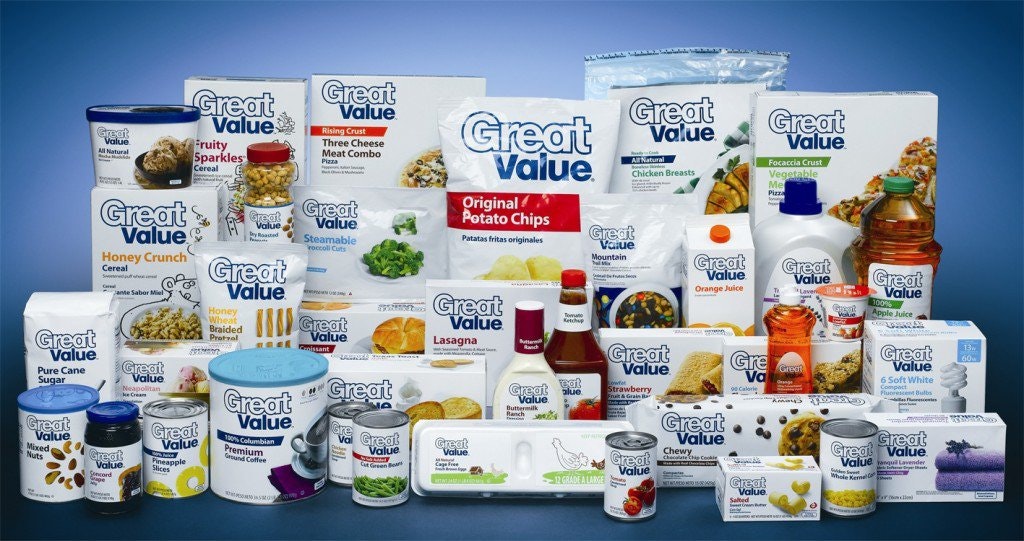
Other common private label brands are Mainstays from Target and Kirkland from Costco.
In many cases, the company buying private label products has some control over the way the manufacturer produces them. The buying company may ask for certain ingredients to be included, or request certain packaging. This is all determined in your negotiation with the manufacturer, which we’ll cover below.
Tips for starting a private label business
Before you jump into your new private labeling business, there are a few things to consider. Let’s look at the basics.
1. Figure out what to sell
The great thing about private labeling is that you can find virtually any product you might want, including beauty products, household goods, and food.
As you examine your options, consider what you want to sell—but be sure to balance your personal preferences with some market research.
You’ll be sorely disappointed to find that people don’t like your products as much as you do!
Here are some ways you can perform a bit of market research to “validate” your ideas and try to ensure that people are actually interested:
- Google Trends. Type in your ideas and see if those items are trending up, down, or steady.
- Ubersuggest. This tool shows you activity metrics, like how many people per month are searching for those terms.
- Amazon best sellers. What products are hot right now? You can search in different categories to laser-focus your efforts.
- Competitor research. Who’s selling similar products? Scope out their website, social media, and reviews.
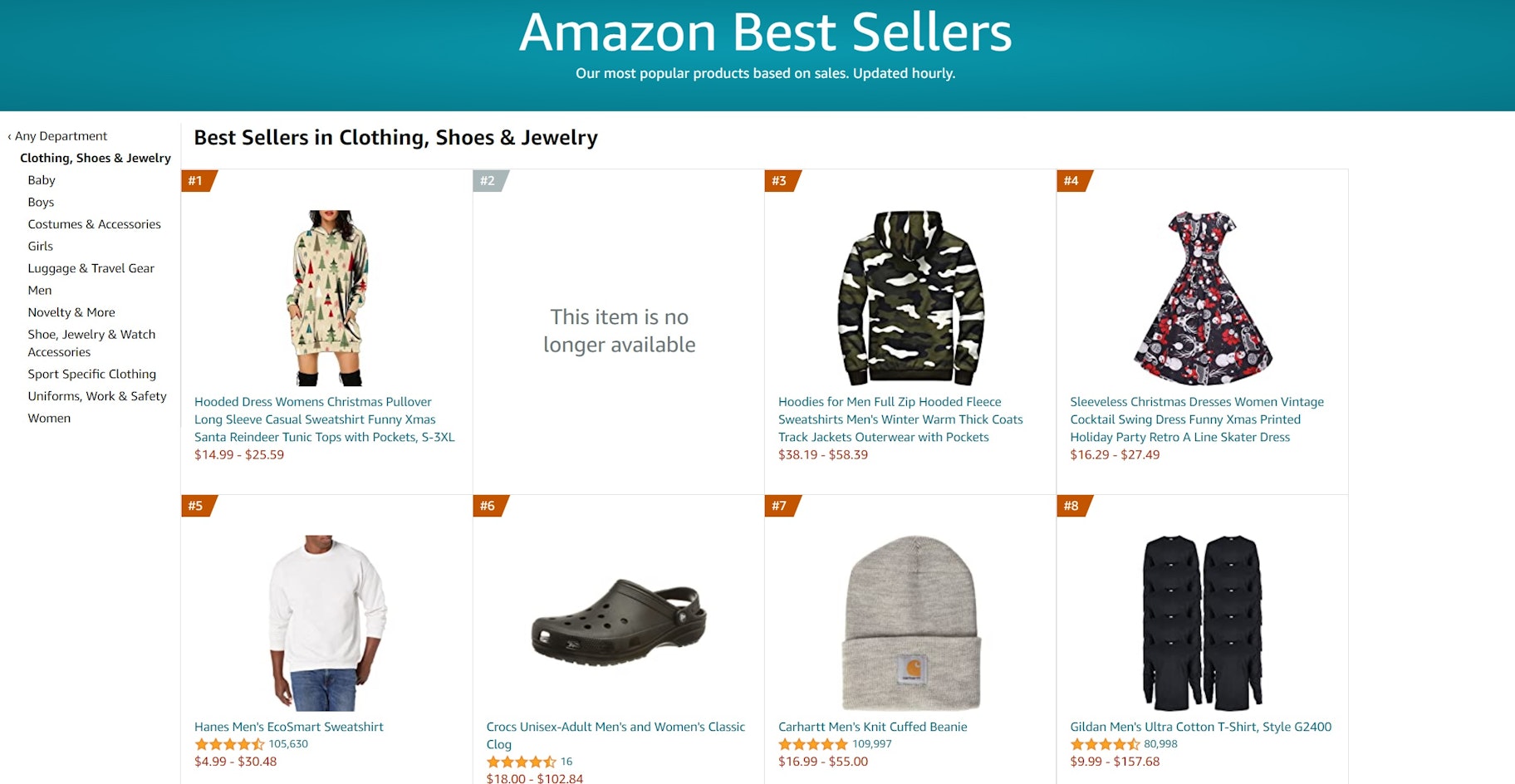
2. Start your manufacturer search
Once you have an idea of the products you’d like to sell, start building a list of manufacturers to reach out to.
It’s extremely important that you set aside time to have conversations with at least a few different manufacturers. This is because, once you enter into an agreement, you’ll be completely dependent on them to meet your needs and expectations.
Here are some key points for talking and negotiating with manufacturers:
- Ask as many questions as you need and gauge their responsiveness. If they don’t answer questions or take too long to respond, you might have problems later on.
- Be 100% clear on price, turnaround times, contracts and agreements, and specs and requirements for sending in your brand art.
- Research the company’s reviews and reputation. If they have less than 4 or 4.5 stars on review sites, proceed with caution. You can also ask them for reviews and testimonials from previous customers, or even ask for contact information to reach out to those customers yourself.
- Once you’ve designed your brand, order samples before placing a large order. This ensures that you’re satisfied with the quality, shipping, and order process so you don’t face any surprises later.
3. Design your brand
By now, you’ve probably got plenty of awesome ideas for bringing your brand to life. Next, it’s time to make some magic happen!
Even if you don’t have graphic design experience, there are plenty of free or paid tools to help you create beautiful brand art. You’ll find thousands of templates, icons, backgrounds, and other design assets at your fingertips.
Here are a few design tools:
- Canva
- Hatchful
- Adobe Spark
- Pixlr
- Gimp (often called “the free version of Photoshop”)
After selecting a few details, Shopify’s logo maker gave me a few options for a made-up home-and-garden brand called Lazy Sunday.
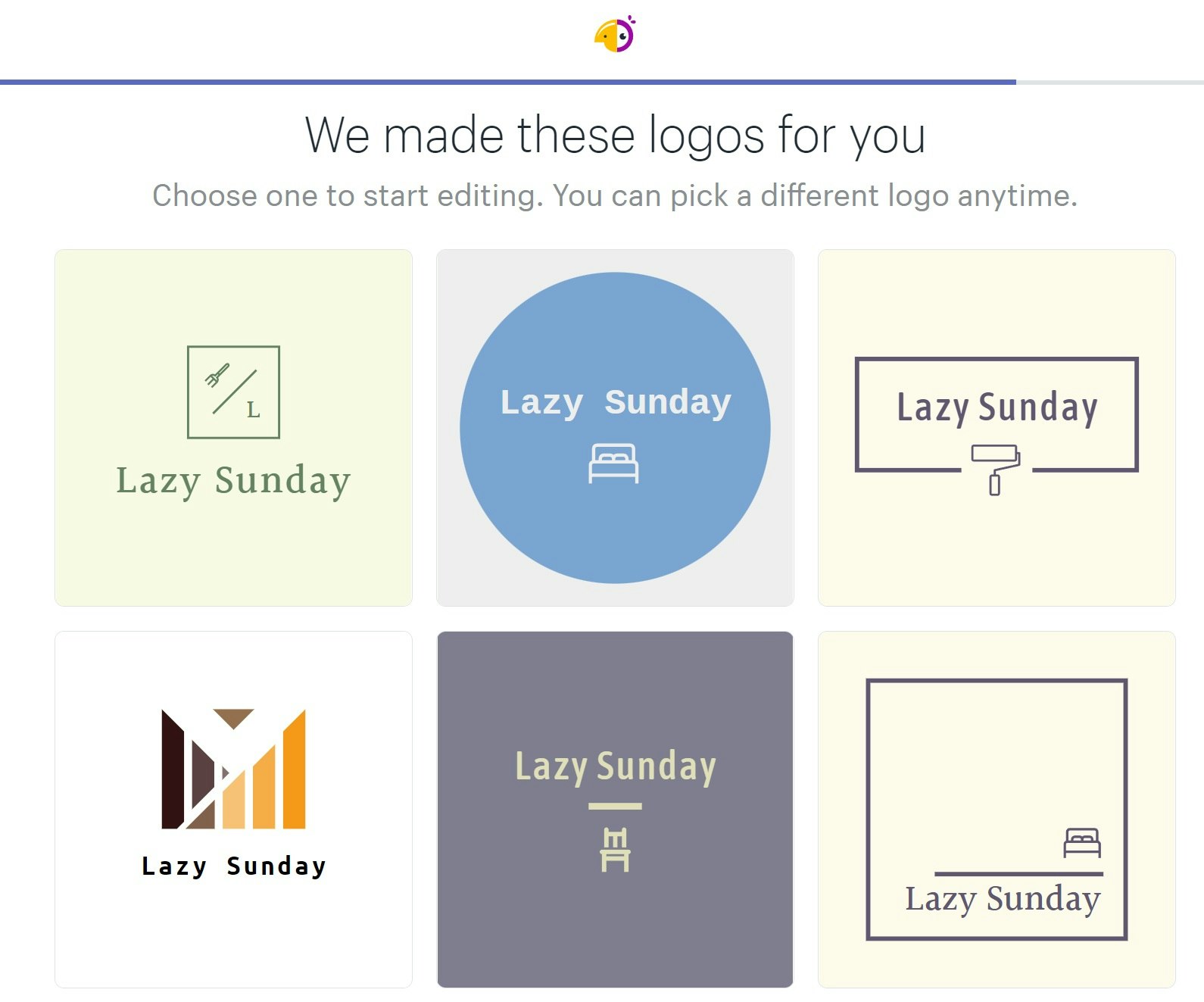
If you’d rather avoid the design process, consider hiring a graphic designer through an online freelancer marketplace. There are tons to choose from, so you’re bound to find the perfect designer for your needs.
Here are a few freelance marketplace platforms:
4. Build your ecommerce store
Once you’ve landed a manufacturer and created your brand, it’s time to turn your idea into reality. Sign up for a Shopify store and start building.
You can choose from thousands of free or paid web design templates to get started, then customize until you’re in love with your creation.
Here’s a checklist of things to do when building your store:
- Customize your theme’s creative elements, including colors, graphics, and fonts. Make your brand’s unique personality shine.
- Take multiple high-quality photos of each product for your product pages.
- Write detailed, creative, and engaging product descriptions to boost your sales.
- Choose the right pricing. Calculate your costs and make sure they’re covered, then add the profit margin you’re aiming for. Try Shopify’s profit margin calculator.
- Create legal pages to cover your business and inform your customers. Try free tools like Shopify’s privacy policy, terms and conditions, and refund policy generators.
And here’s a preview of Shopify’s theme editor:
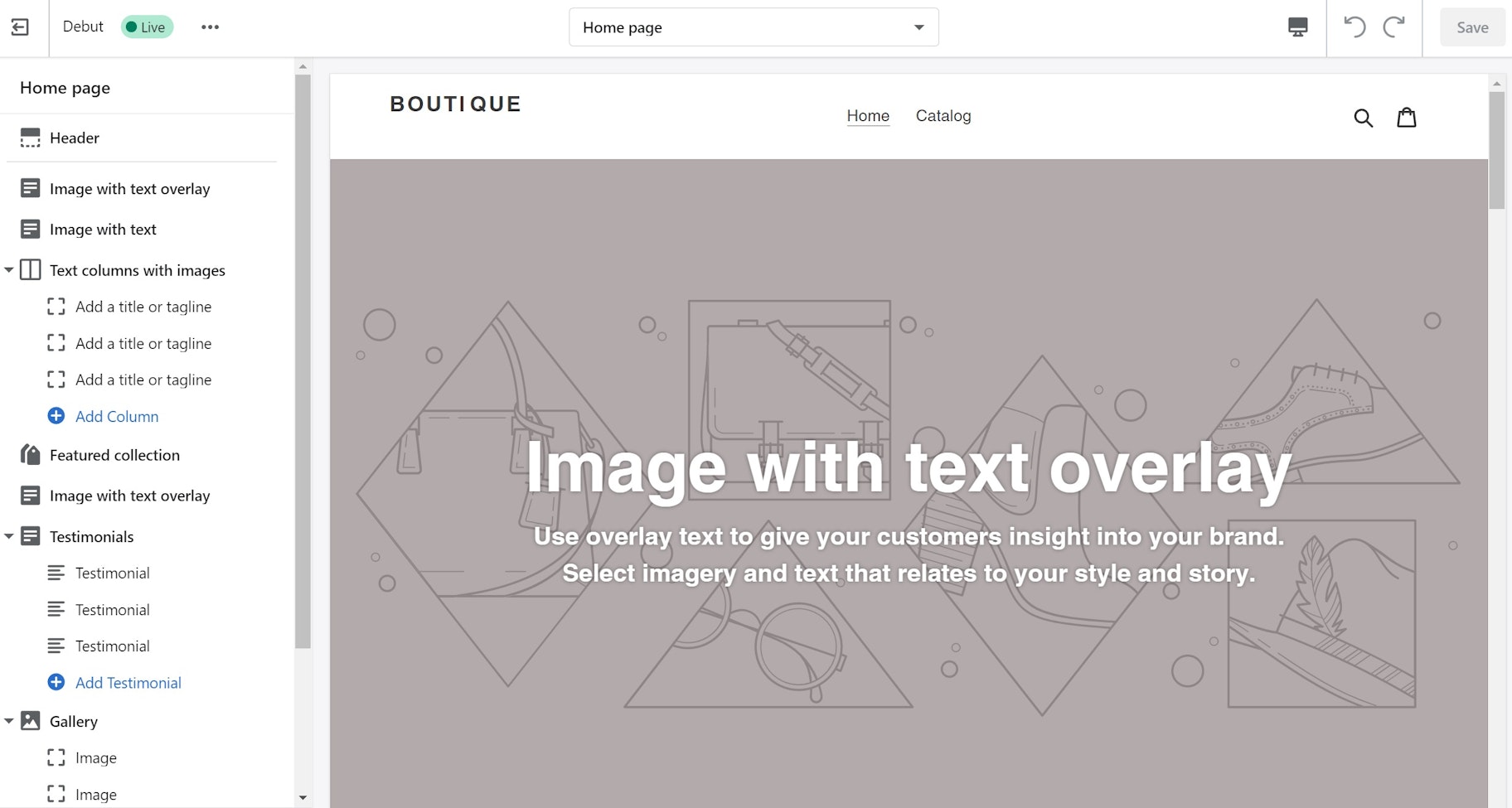
5. Create a killer marketing plan
To actually get customers to your store, you’ll need to put in some marketing elbow grease. There are two general categories of marketing: paid and organic.
Paid marketing channels are a great way to get immediate traffic. These include platforms like Facebook and Instagram Ads and Google Ads.
Organic marketing is more grassroots—you build it up slowly over time, and you’re not using a “pay to play” approach like with advertising channels.
Here are some of the top ways to market your store organically:
- Social media marketing. Practically every brand is on social media. Create a consistent, engaging, and fun content plan for channels like Facebook, Instagram, TikTok, and Twitter.
- Content marketing. Write custom content like blogs, ebooks, guides, and infographics. Post them on your website and use them to attract website visitors.
- Email marketing. Add opt-ins to your website to collect email addresses, then send them special deals, helpful resources, and company updates.
- Search engine optimization (SEO). SEO can be done on the back end and front end. It can get fairly complex, so do your research or hire an SEO expert.
- Word-of-mouth marketing. Get your customers to tell their friends how awesome you are. Referral programs are a great strategy.
Cookie brand Partake Foods has a beautifully crafted social media marketing strategy, with visuals that enforce its brand, posts related to holidays and current events, and special announcements its customers will be interested in.
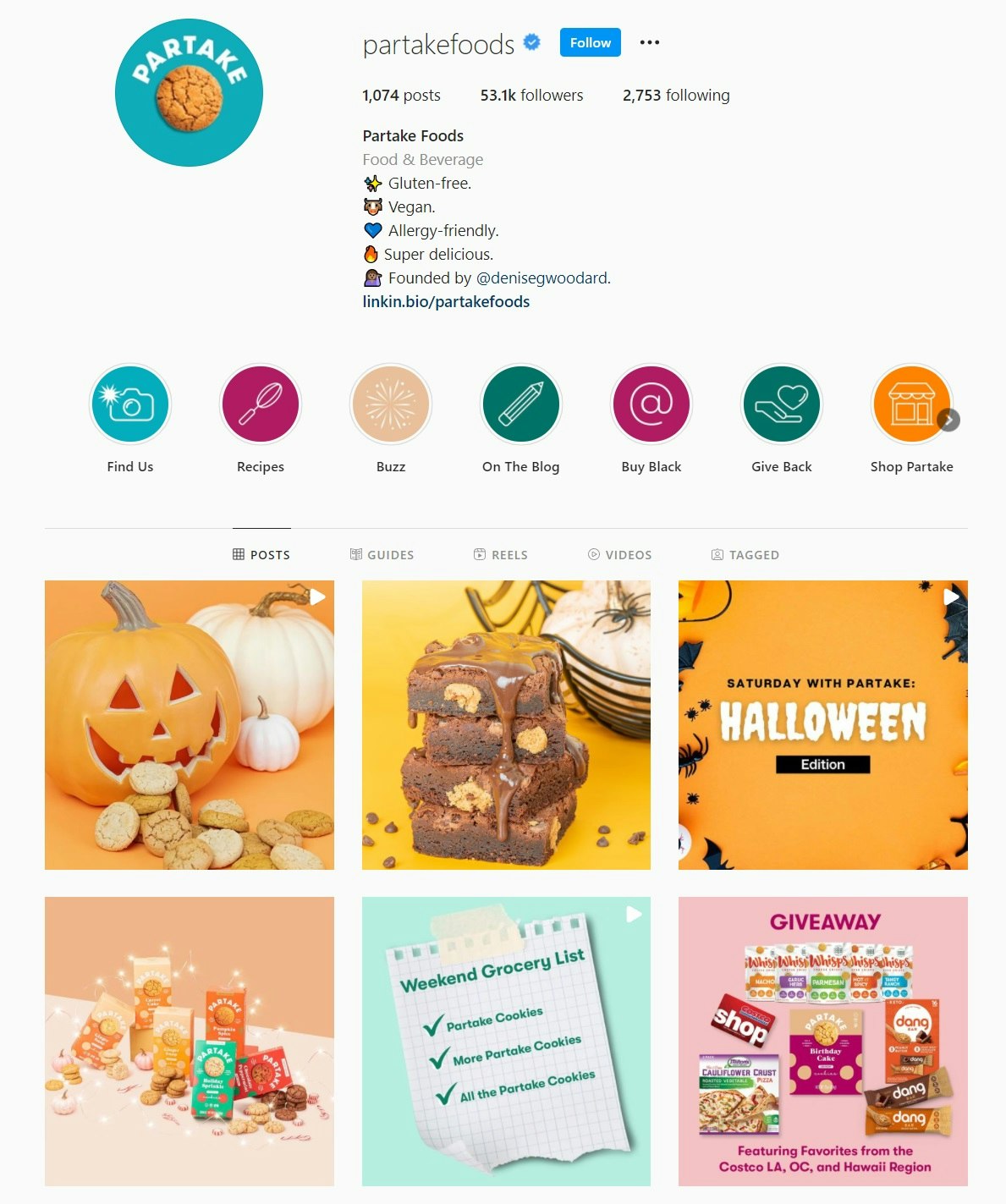
Private label manufacturers for creating your own product line
Choosing a private label manufacturer can be challenging due to the similar nature of services offered by each vendor. To find the one that suits your business, you have to consider what types of products you want to make and sell, the margin you want to add on top of product costs, and where you want to sell and ship the items.
Here’s an insight into some of the best private label manufacturing services for all kinds of goods. Most here have a Shopify app you can use to load items into your product catalog easily.
1. Alibaba
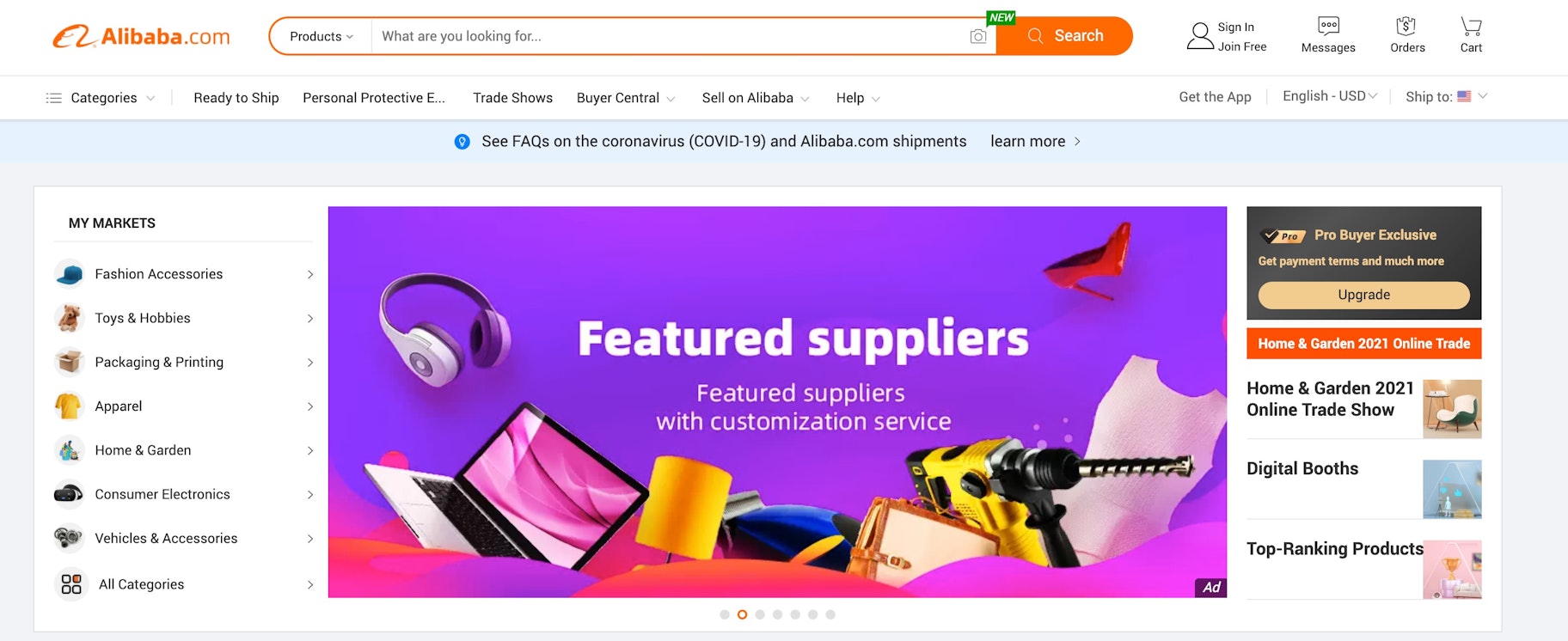
Alibaba is among the biggest ecommerce companies in the world. Earning a revenue of around $72 billion in 2020, Alibaba thrives on offering one of the most comprehensive supplier directories, connecting merchants with vendors everywhere. You can access all kinds of vendors through Alibaba’s directory, selling items in categories like agriculture, food and beverages, textiles, jewelry, and more.
Though Alibaba doesn’t offer a Shopify app, so many private label manufacturers are on board that it’s worth a look. You can get custom logos and designs printed on just about any product, plus buy items in bulk to lower your inventory costs.
2. AOP+ Easy Print on Demand
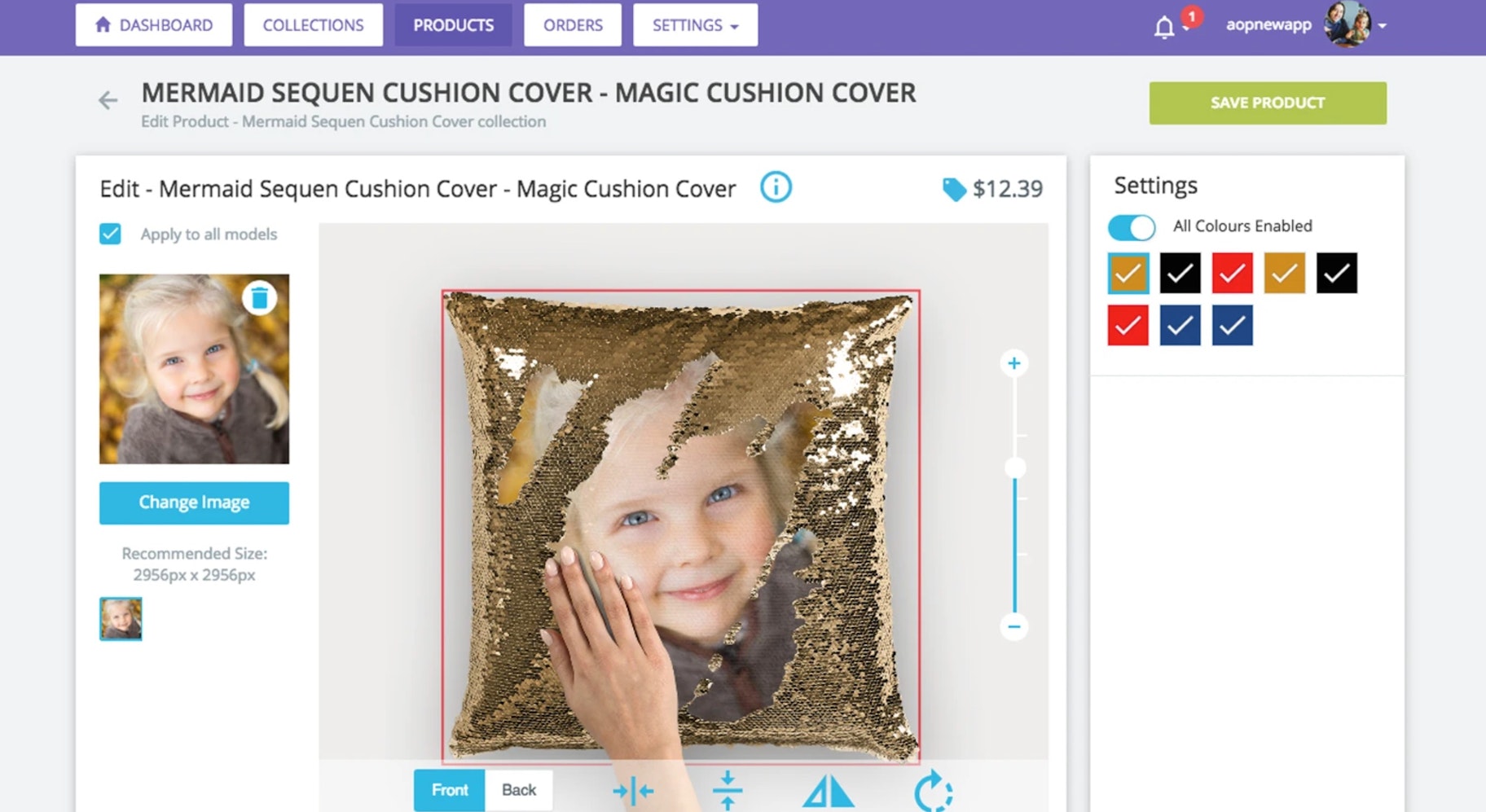
AOP+ Easy Print on Demand is an excellent choice for sourcing products from manufacturers in the US, UK, and EU. It specializes in apparel and accessories, making it perfect for those looking to start an online boutique.
AOP+ does all the printing itself and will even work with you to make your own custom private label products. You don’t need to pay for stock and warehousing because the manufacturer handles that for you. All you do is choose the items you want to sell, work with the manufacturer to customize your products, then list them on your Shopify store via the AOP+ Shopify app.
The app is easy to use and also automates order processing and fulfillment for the merchant.
3. Modalyst
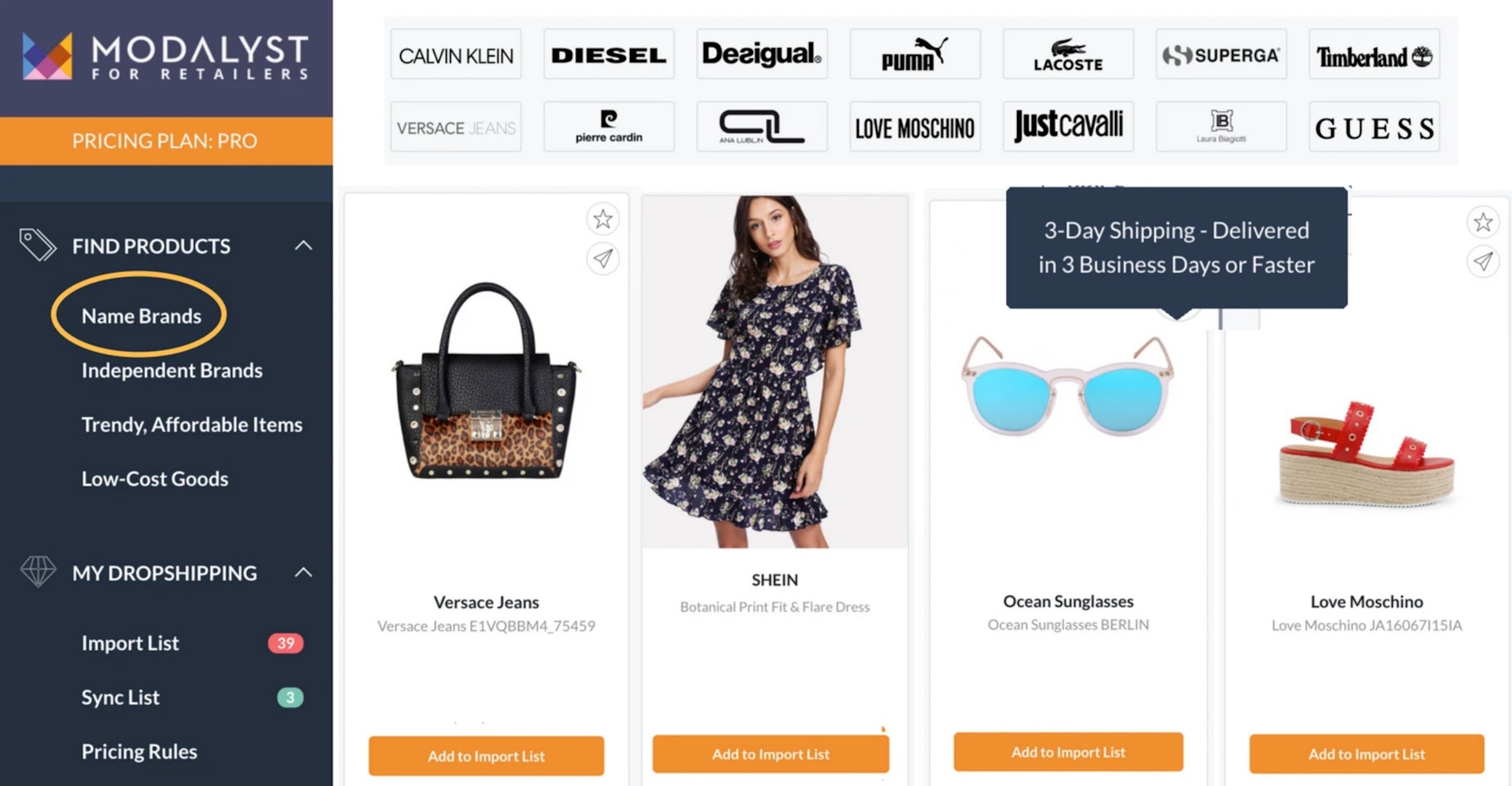
Being an AliExpress partner, Modalyst has one of the larger product catalogs on this list. There are over a million different products to choose from, and a convenient dropshipping process ensures you don’t have to handle the stress of warehousing and shipping yourself.
For private labeling purposes, Modalyst is ideal for selling custom athletic apparel. Although you will need to purchase the $90 per month Pro plan to access the custom packaging and branding options, you will be able to customize and sell unlimited products. There’s also fast shipping available for Pro users—typically three to eight days for local shipping and under 15 business days for international orders.
4. Blanka
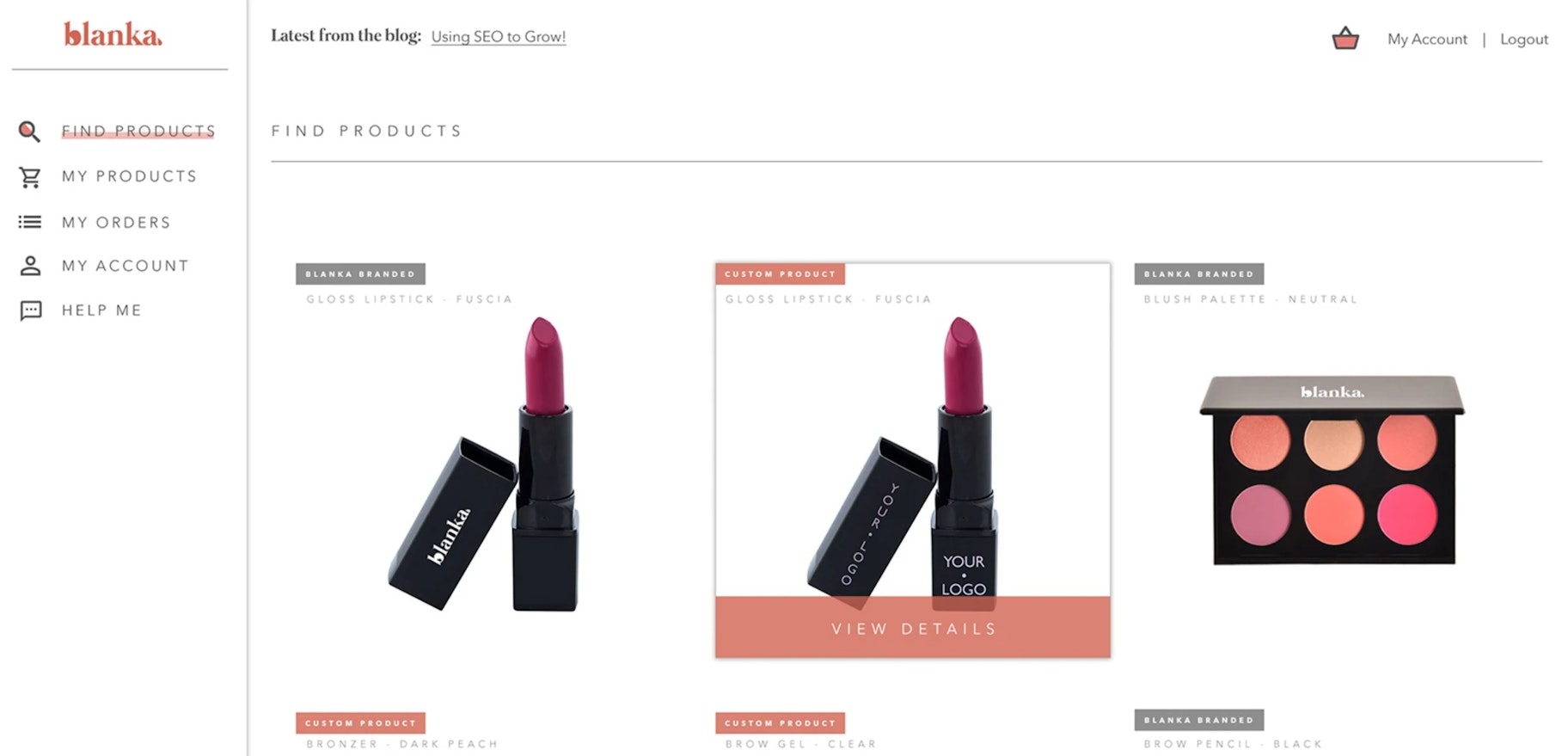
Store owners keen to sell private label beauty products should consider Blanka, a dedicated cosmetics manufacturer dropshipping to Canada and the US. Blanka’s platform allows you to create beauty products featuring bespoke packaging and branding. You can choose from hundreds of items to sell through your store, from bronzers and powder blushes to lipsticks and brow kits. Having local vendors in Canada and the US means you can get products to customers faster.
Blanka also has a Shopify integration, so you can load products into your catalog quickly and automate your order fulfillment process. Plus, with no minimum order quantities, Blanka makes it easy for smaller merchants to source and sell private label products.
5. Dripshipper
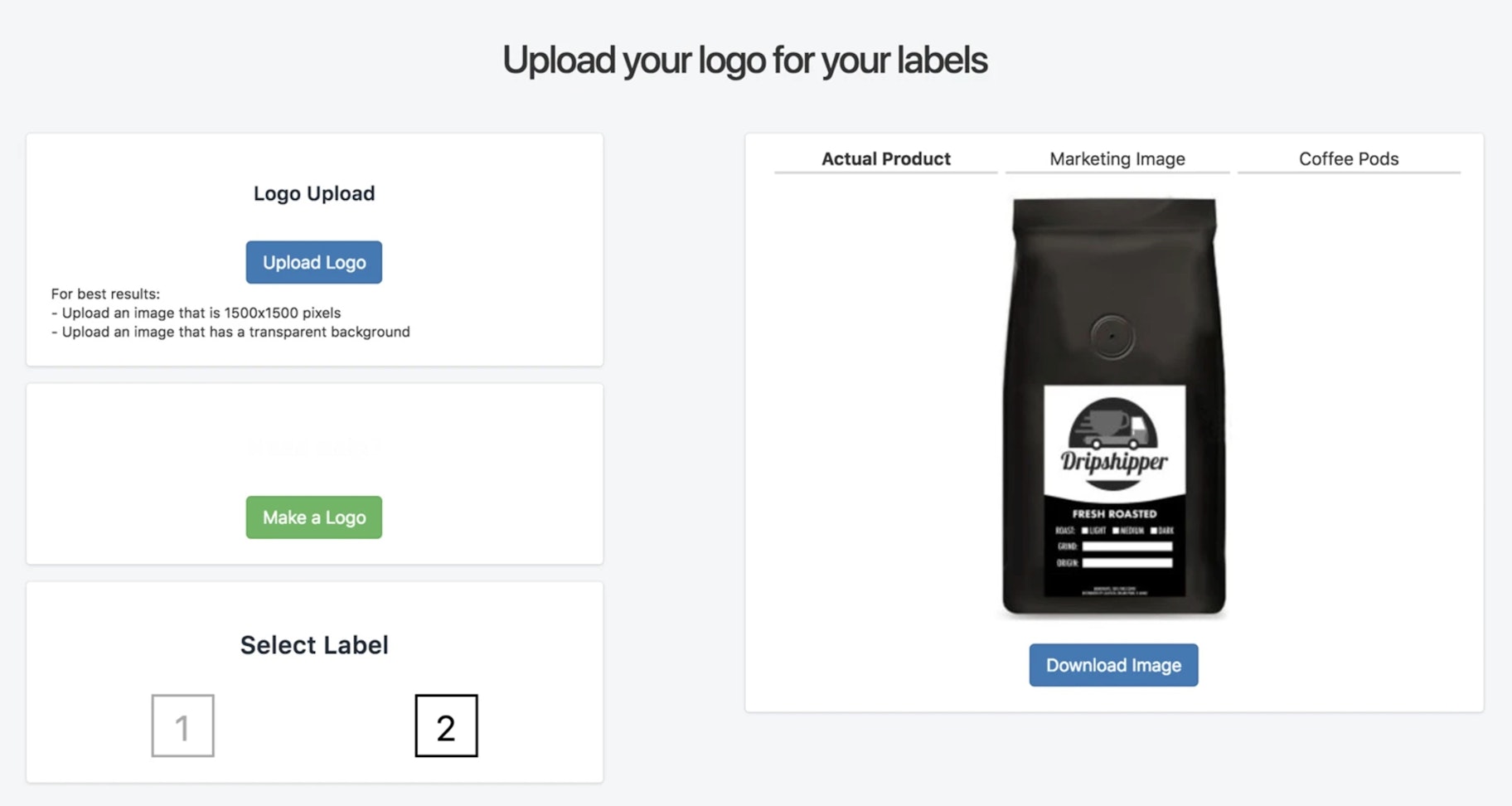
If you’re interested in selling coffee online, Dripshipper offers an easy way to create your own branded coffee line. You can choose the coffee products you want to sell, including high-quality fresh coffee beans, then customize your packaging, logo, labels, and pricing.
Though Dripshipper is based in the US, its team can ship your products anywhere worldwide, with shipments sent out within five days of the order being placed. Whole beans are dispatched the day they’re roasted, while ground beans are sent out the next day.
Dripshipper makes creating unique coffee products quick and easy, with plenty of self-help available for beginners. Higher-tiered plans also offer access to support, coaching, and training from a dedicated success manager. You can also access the Dripshipper in-house design team on the Elite plan (costing $197 per month).
Private labeling: The sweet spot for ecommerce businesses
Many new and seasoned entrepreneurs find that private labeling is the proverbial “sweet spot” for starting an ecommerce business.
They don’t have to spend the time and money on designing and building their product lines from scratch, but they still have the flexibility to be able to design their own custom brand to stand out from their competitors.
With some solid research and a strategic plan, you have tons of options to dream up and create your next ecommerce company.
Want to learn more?
- Product Packaging: How to Make It Attractive in 2021
- 5 Trust Badges That Can Increase Your Conversion Rate
- How to Build a Brand: An 8-Step Guide for 2021
- 10 Vital Strategies to Use When Marketing to Generation Z




